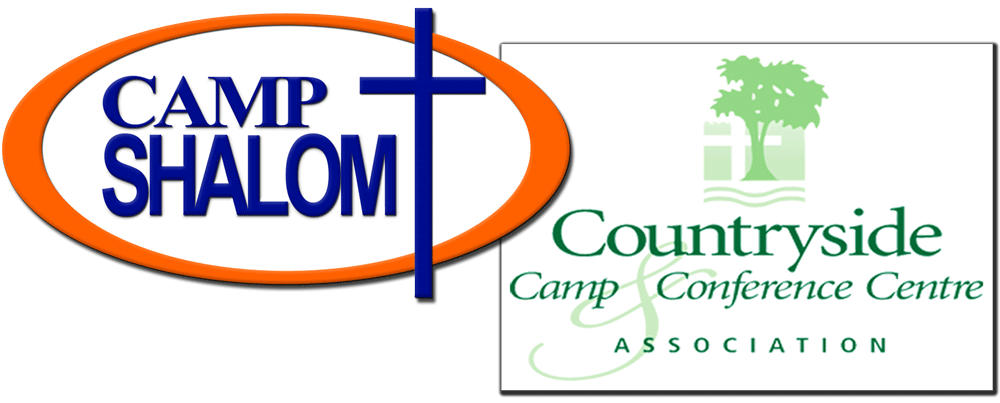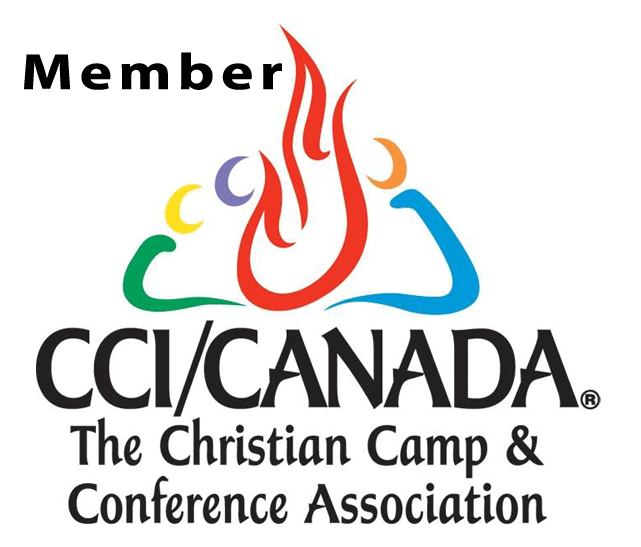Volunteers: The New Breed- Vol 2
Why are people so busy these days?
As I continue to read and study my way through The New Breed by Jonathan and Thomas McKee; the authors state, “as we entered the new millennium, developments and trends evolved that changed the way we need to operate. Whether we like these changes or not, they’ve produced a new breed of volunteer.”
I like the term they use when describing these changes; seismic shifts; small changes and adjustments that cause massive transformation. Through their study they have observed 10 seismic shifts that have shaken the world of volunteer management.
Here is where I want to interject, please understand that no one, no matter how wonderful they are, can manage volunteers. They are not a herd of cows or crops that need to be routinely rotated from field to field for maximum yield. Volunteers are individuals that line up with the ‘Why’ of your cause, organization, or company, and have a desire to serve in a capacity that matches their unique skill set and availability. So it will take Leadership not management to nurture, develop, understand, and challenge the volunteer of the 21st Century.
Here are the 10 seismic shifts that have catalyzed this new breed of volunteer:
- Family Dynamics
- Isolation
- Flexibility
- Generations
- Technology
- Professionalism
- Episodic Volunteering
- Slacktivism
- Micro-Volunteering
- Speed
Last month I highlighted the first two seismic shifts; Family Dynamics and Isolation. This month I will touch on the next three: Flexibility and Generations.
Seismic Shift 3
Flexibility – From Rigid scheduling to Volunteer Availability
Thomas McKee, one of the authors, was a stay-at-home dad while he was in graduate school and his wife Susie worked. He shared of a time when they received a letter from his son Thom’s elementary school asking moms to volunteer as room mothers. Here is his story, see how perfectly it identifies this New Breed of Volunteer.
“So I filled out the form, crossing out the words ‘room mother’ and writing in ‘room father’. I received a call from Thom’s teacher saying that she’d love to have me help. I’ll never forget the first meeting at the home of one of the moms. Most of the volunteers were wealthy, well-dressed women who didn’t work. I arrived in jeans — a poor graduate student living in student housing. The women talked about making cookies and arranging for holiday goodies for the school. I kept thinking, “This isn’t what I signed up for.” I felt completely out of place, even though the women were gracious and tried to find a place for me. When I got home, I called Thom’s teacher and told her I’d love to volunteer to help in the classroom, attend field trips, and perhaps even bring my guitar to the class and lead the group in a sing-and-story time. But I didn’t think these home meetings were a good fit. The teacher quickly changed the program and classified me as the room father. I had a great year volunteering because the school was willing to let me use my strengths and to be in the classroom when it fit our busy schedule. But I certainly didn’t fit the mold of the stay-at-home moms who organized class parties and baked cookies.”
The 21st century calls for a new system and for a greatly expanded definition of what it means to be a volunteer. Rather than always recruiting for specific volunteers to fill existing roles, organizations are empowering a new breed of volunteers to work their own way and according to their own schedules.
“Let me ask you this, when you are seeking opportunities to serve as a volunteer, which is more important? Take a moment, at your leisure, to number the following choices (1-4) to fit your priority as a personal exercise.”
Click here to take the quick survey.
Seismic Shift 4
What’s wrong with these young people?
Generations – From Experienced Veterans to Novice Gen Y (Tim’s expanded version to Gen Z)
I think at some point, if you have volunteered in organizations throughout your lifetime you remember “the look”.
They called him the General; he was retired from somewhere, his face was weathered and his eyes were sharp. He could tell a slacker just by the look on his face and the length of his hair. He had more years of volunteer service in this organization than Noah building the ark and everyone in the place knew it.
I arrived with a rather small group; joyful, exuberant, and ready to make a big difference in the world. He saw me as a cog in his system and his orientation was simple and unforgettable: “It’s my way or the highway, understand. We have deadlines to meet and quotas to reach, and where are the others that are supposed to be here with you? Here is what you do and there is where it gets done. Understand? Let’s get to work!”
I was a Volunteer; have you figured what organization I chose to serve with and the world changing task that needed to be accomplished?

Before I move into a discussion of the current generational characteristics of today’s volunteer, I want to join Marty McFly in Doc Brown’s DeLorean and go Back to the Future. We now have five recognizable generations:
- Traditionalists or Silent Generation: Born 1945 and before.
- Baby Boomers: Born 1946 to 1964.
- Generation X: Born 1965 to 1976.
- Millennials or Gen Y: Born 1977 to 1995.
- Gen Z, iGen or Centennials: Born 1996 and later.
Today, I have noticed three new generations of potential volunteers as you may have seen in organizations where you serve: Retiring Boomers, Gen Y’s, and now Gen Z’s.
Retiring Boomers
Can you guess what is the number one ranked, most popular form of volunteering for this youthful generation over 55 years of age? Serving at Camps! No. The number one most popular form of volunteering for individuals 55 years and older is; “collecting, preparing, distributing or serving food.”
Here is Cambridge, Ontario two highly respected and solid community organizations are almost fully functioned by Boomer Volunteers; The Trinity Community Table and The Ontario Christian Gleaners.
The Trinity Community Table
at Trinity Anglican Church in Cambridge
Launched in 1992, Trinity Community Table (TCT) is a community outreach program that provides nourishing noon meals in a hospitable environment to all who have need. Meals are served in the parish hall of Trinity Anglican Church in Cambridge, Ontario.
(Fast Facts)
1- They serve up to 175 guests every Monday, Wednesday, and Friday.
2- In 2016 they served 19,000 hot meals.
3- TCT receives no government funding.
4- All financial and material gifts are used entirely to meet TCT objectives.
5- TCT is an all-volunteer organization. Some 100 volunteers contribute more than 10,000 hours per year.
(I met many of these volunteers and they are well into their later 60`s or 70`s)
6- The Board of Directors and other volunteers receive no remuneration.
To learn more go to their website: www.trinityanglican.on.ca/TCT
Ontario Christian Gleaners in Cambridge
The ‘Gleaners’ is a volunteer-driven organization, with over 1100 donated hours each week. Each day, the volunteers are currently trimming 5000+ pounds of vegetables, providing the ingredients for 30,000 servings of soup. The trimmed vegetables are diced and then dried in a dehydration oven – later to be combined with other ingredients to constitute the soup mix. The soup is donated to partner organizations who have the necessary infrastructure for effective distribution, who are committed to sustainability and development, and who combine the gospel message with humanitarian aid.
I have volunteered here with our summer staff and our campers in the Discipleship program, but many are of this Boomer generation. If your church or business is looking for a great team building opportunity call Shelley Stone their Manager and she will be more than happy to schedule you a time to serve.
To learn more go to their website: www.ontariogleaners.org
The second most popular form of volunteering for the boomers is “providing professional or management assistance, including serving on a board or committee.” This is where some chose to serve here at camp. I love what Raelin Storey, a spokeswoman for Hollywood, Florida’s BEST program (Boomers Experience and Skills Team) say about this generation of potential servers: “It seemed to us that we needed to create something fulfilling and rewarding that would build on the skills and unique talents of boomers. They want to know they’re making a difference.”
Due to primarily the economic downturn of 2008, the number of Boomer volunteers across the nonprofit and charitable sectors has declined. Individuals in this generation are extending their working years beyond their original plan due the crash of their investments and retirement savings plans that are just now starting to rebound. When these individuals do volunteer, they are loyal and choose those organizations, programs, or events that resonate with their soul. They have energy formerly spent on their our children and, now since they are empty-nested, an eagerness to offer seasoned experience and learning that can only come from lifelong lessons.
GenY’s
From the book, the authors highlight the Gen Y, sometimes referred to as the texting generation, these Millennials get a bad rap. Sure, they may answer their cellphones in the middle of a meeting. Like Gen Xers they’ll wear torn jeans and a t-shirt to a fund-raising dinner. Almost a third of them have a body piercing somewhere other than their ears. They prefer texting to talking on the phone. They constantly seek times to just “hang out” with each other. They were raised on MTV, reality shows, social media, video games and often are stereotyped as narcissistic or entitled and like so many of the members of the other generations – willing to serve as a volunteer if they think they can make a difference.
To these young professionals, ‘loving what they do’ trumps a large salary. They have savvy and huge tech skills and the need to be recognized for what they bring to an organization. They want the older generation to tap into their skills and attitude. In a 2012 article by Nick Shore, in Media Post, he notes that 76% believe “my boss could learn a lot from me” and 65% believe “I should be mentoring older co-workers when it comes to tech and getting things done”.
Gen Y volunteers might not always like your ideas. But don’t hold that against them, because some of their ideas are better. They are indeed individuals who often enjoy and are attracted to the community that volunteering offers.
Gen Z’s
A lot of information is still being written, and studies are in process regarding our current generation. This new group of individuals is making big waves in all the ways a generation possibly could — including parenting, education, employment, entrepreneurship, sales, marketing, politics, religion, and more.
An interesting and important event that has shaped, puzzled, and defined this generation was September 11, 2001. Members of this generation have a hard time processing the significance of 9/11 and it has always been part of their history.
I found two great articles highlighting characteristics of Gen Z, the first can be found on POPSUGAR by Ashley Paige, which offers 11 Characteristics of Generation Z, and the second one on Youth Specialties atyouthspecialties.com/blog/generation-z, by Maina Mwaura. Both of these articles will enlighten you with a better understanding of today’s generation.
I have chosen to highlight the top ten things that we know about Generation Z from Maina Mwaura’s article, Generation Z.*
- WHO ARE THEY?
Generation Z is composed of the individuals born in the mid-to-late 1990s.
- THEY ARE LARGE.
According to Forbes magazine they make up 25% of the population, larger by far than the Baby Boomers and Millennial generations.
- THEY ARE THE CHILDREN OF GENERATION X, SELF-NAMED THE SKEPTICAL GENERATION.
This could mean that Generation Z may pick up that cynical characteristic. Many Generation X believe that the American dream isn’t attainable. (the Canadian dream applies)
- GENERATION Z HAS JUST STARTED TO ENROLL IN COLLEGE AND SOME OF THEM ARE NEARING GRADUATION.
This may lead many to believe underestimate this generation, perpetuated by the belief that we can’t really know much about this generation because they haven’t had an opportunity to yet made their mark. While this is a valid point; I urge caution in jumping to this conclusion. For those of you that have children, you are aware that certain characteristics of your children were evident even in their early youth. I believe there are certain gifts and characteristics of Generation Z are now being formed. Recognizing these gift in advance will help us stay in front of this generation and not play catch up.
- THIS ONE WILL NOT SURPRISE YOU AT ALL: GENERATION Z IS TECH-CENTRIC.
Generation Z is very comfortable with technology; in fact, most have never lived in a home without a computer. Let’s go a step further and assert that they have also never lived in a home without the access to social media.
- GENERATION Z IS THE FIRST GENERATION SINCE THE GREAT DEPRESSION TO HAVE EXPERIENCED FINANCIAL HARDSHIP.
Generation Z saw their parents walk through the loss of homes and jobs. This is a generation that may seem less settled because of what they have seen their parents lose.
- THEY BELIEVE THAT EDUCATION IS THE KEY TO GAINING A BETTER LIFE AND SUCCESS.
Many of them start preparing for college earlier than their millennials parents and Generation X. This preparation also tends to breed a competitive spirit because many of them also express the fear and worry of being able to afford it.
- FAMILY LIFE IS VERY IMPORTANT TO THEM.
According to the book, Generation Z Goes to College and 88 % of Generation Z feels extremely close to their parents. Another point to the note is that this generation has seen a huge rise in home schooling, which may attribute to this.
- THEY ARE EXTREMELY DIVERSE.
This is a trend that we have seen in generations before them. This generation is composed of only 55% of Caucasian descent, with Hispanics coming in second, at 24%. (USA Statistic)
- THEY ARE CHURCH GOERS.
According to research done by Joan Hope, 41% of Generation Z has attended church in their young adulthood, which could make life for us in ministry exciting and complicated in what to do with this new wave of church goers.
Now, having a better understanding of these three generations I hope you can see the huge potential available for service to organizations throughout Canada.
If you would like to know the organization I was serving with and my task assigned when I met the General, comment on the bottom on this blog and I will share it.
Sincerely,
Tim Partridge
Managing Director
*MAINA MWAURA loves to guide student leaders. He is the husband of Tiffiney and has a two-year-old daughter name Zyan. Maina, lives in the Atlanta area and is the mobilization pastor at West Ridge Church. Check out more info at MAINASPEAKS.COM



